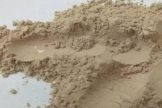
A question which regularly gets asked at the nursery is “what do I do with my soil now I have removed the concrete?”
The issues that arise with soil under large areas of concrete include compaction, hydrophobic soil, lack of organic material and pH. Depending on the degree of compaction, you may need to hire equipment to do some of the initial breaking up of the soil. If it isn’t too bad, then a sturdy garden fork and muscles will do the trick.
Before any treatment of the soil begins do a soil pH test so you have an idea of the pH levels. If soil pH is neutral, just remove all the cement and crushed rock cleanly and progress on with the soil rehabilitation. If soil is acidic, then you don’t need to be so particular about removing all the fine cement particles, if pH is very low then adjust using garden lime, if pH is very high (alkaline) then adjust using sulphur. Commercial fertilizers containing ammonium sulphate or sulphur coated urea will also lower soil pH. Do not over-apply acidifiers, they will gradually lower the pH over a few months.
Organic materials (compost and manure) need to be dug into the soil. This will help break up the compacted soil, increasing the pore space and improve the overall structure. The major advantage in the long term of adding lots of organic material is it encourages earth worms and other soil fauna into the soil which themselves do most of the hard work in improving soil structure.
If the concreted area was large and water has not penetrated for years, the soil may have become hydrophobic (repels water). There are several commercially available products which can be watered in or dug in to solve this problem. If the problem is severe, expect to repeat the application several times.
You can fairly rapidly improve your soil, but it will take a few years to completely re-establish the soil micro fauna and flora and that beautiful dark fruitcake soil is re-established.





